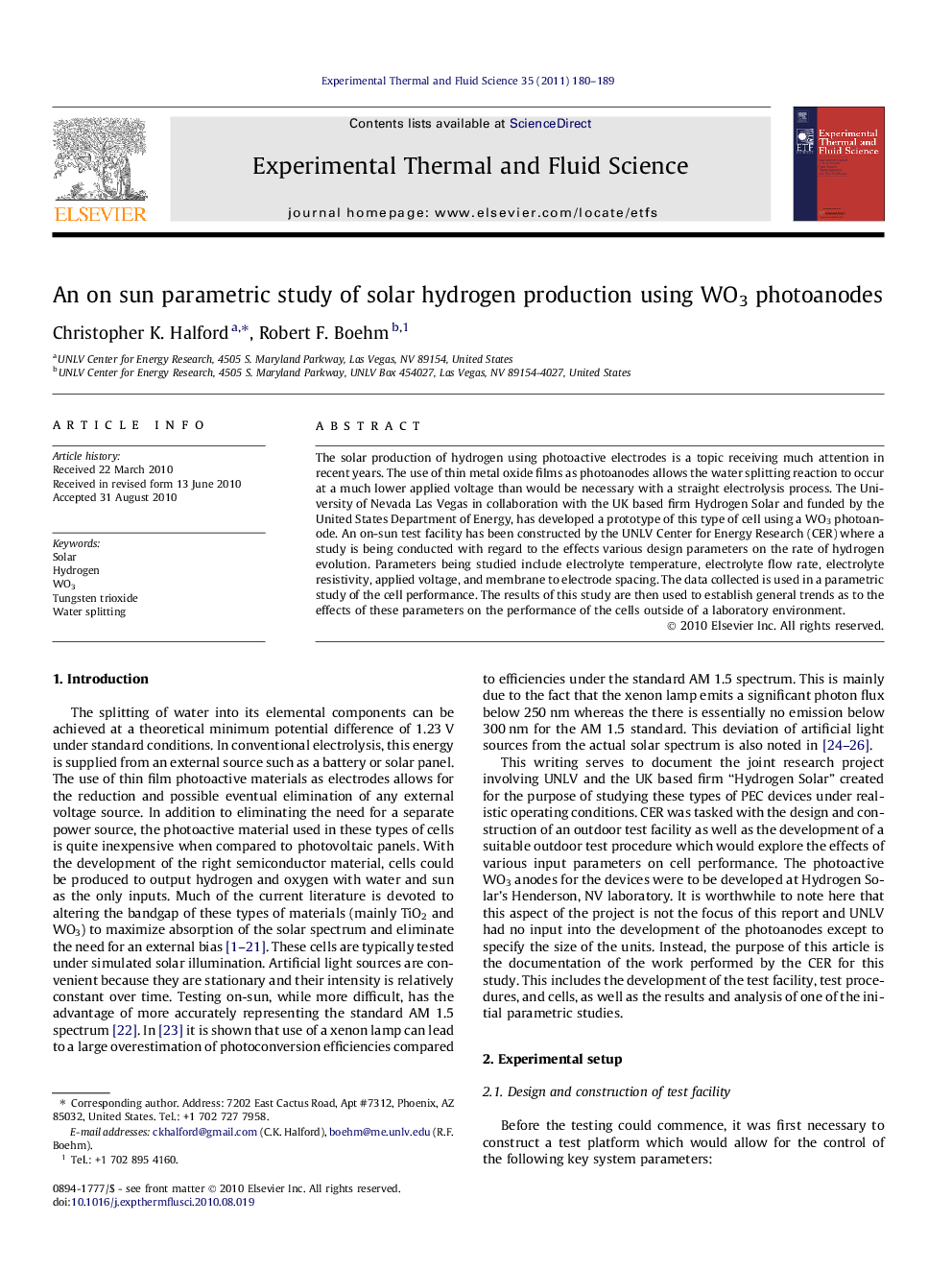| Article ID | Journal | Published Year | Pages | File Type |
|---|---|---|---|---|
| 652049 | Experimental Thermal and Fluid Science | 2011 | 10 Pages |
Abstract
The solar production of hydrogen using photoactive electrodes is a topic receiving much attention in recent years. The use of thin metal oxide films as photoanodes allows the water splitting reaction to occur at a much lower applied voltage than would be necessary with a straight electrolysis process. The University of Nevada Las Vegas in collaboration with the UK based firm Hydrogen Solar and funded by the United States Department of Energy, has developed a prototype of this type of cell using a WO3 photoanode. An on-sun test facility has been constructed by the UNLV Center for Energy Research (CER) where a study is being conducted with regard to the effects various design parameters on the rate of hydrogen evolution. Parameters being studied include electrolyte temperature, electrolyte flow rate, electrolyte resistivity, applied voltage, and membrane to electrode spacing. The data collected is used in a parametric study of the cell performance. The results of this study are then used to establish general trends as to the effects of these parameters on the performance of the cells outside of a laboratory environment.
Related Topics
Physical Sciences and Engineering
Chemical Engineering
Fluid Flow and Transfer Processes
Authors
Christopher K. Halford, Robert F. Boehm,
